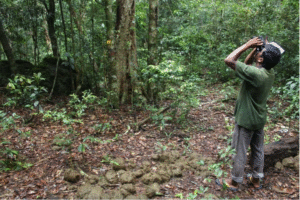The Ranebennur Blackbuck Sanctuary in Karnataka hosts one of the largest populations of blackbucks in India, residing within its grassland ecosystem. A comprehensive Wildlife Management Plan was developed following biodiversity assessments and stakeholder consultations to mitigate threats and enhance habitat quality.
Assessment Highlights:
Detailed population and habitat surveys identified critical grassland areas, monitoring blackbuck population dynamics.
Key threats such as habitat fragmentation, invasive species, and human disturbance were mapped and analyzed.
Community engagement and anti-poaching measures were incorporated to ensure local support and protection efficacy.
Implementation of Suggestions:
Habitat Management: Invasive species removal and native grassland restoration were carried out across priority zones, improving the quality and extent of blackbuck habitat.
Grazing Regulations: Controlled livestock grazing schedules were introduced to reduce habitat degradation while supporting local livelihoods.
Corridor Connectivity: Wildlife corridors linking fragmented habitats were restored and maintained, facilitating safe blackbuck movement and genetic exchange.
Community Involvement: Awareness campaigns and capacity-building workshops empowered local communities as active stewards of conservation efforts.
Monitoring: Regular camera trapping, transect surveys, and corridor usage studies were institutionalized to track wildlife health and plan adaptive management.
Outcomes:
Stabilization and gradual increase of blackbuck populations over successive years. Enhanced grassland ecosystem health with increased native vegetation cover.
Reduced incidents of poaching and human-wildlife conflict due to better community participation and enforcement.
Strengthened institutional frameworks that ensure ongoing adaptive management and conservation financing.
Why This Case Study Matters:
This example demonstrates the power of implementing thorough assessment recommendations in a coordinated manner — integrating scientific research, habitat restoration, regulatory support, and community involvement — which collectively led to tangible biodiversity gains and ecosystem resilience. It highlights that well-executed management plans, grounded in assessment findings, can transform conservation outcomes positively.






